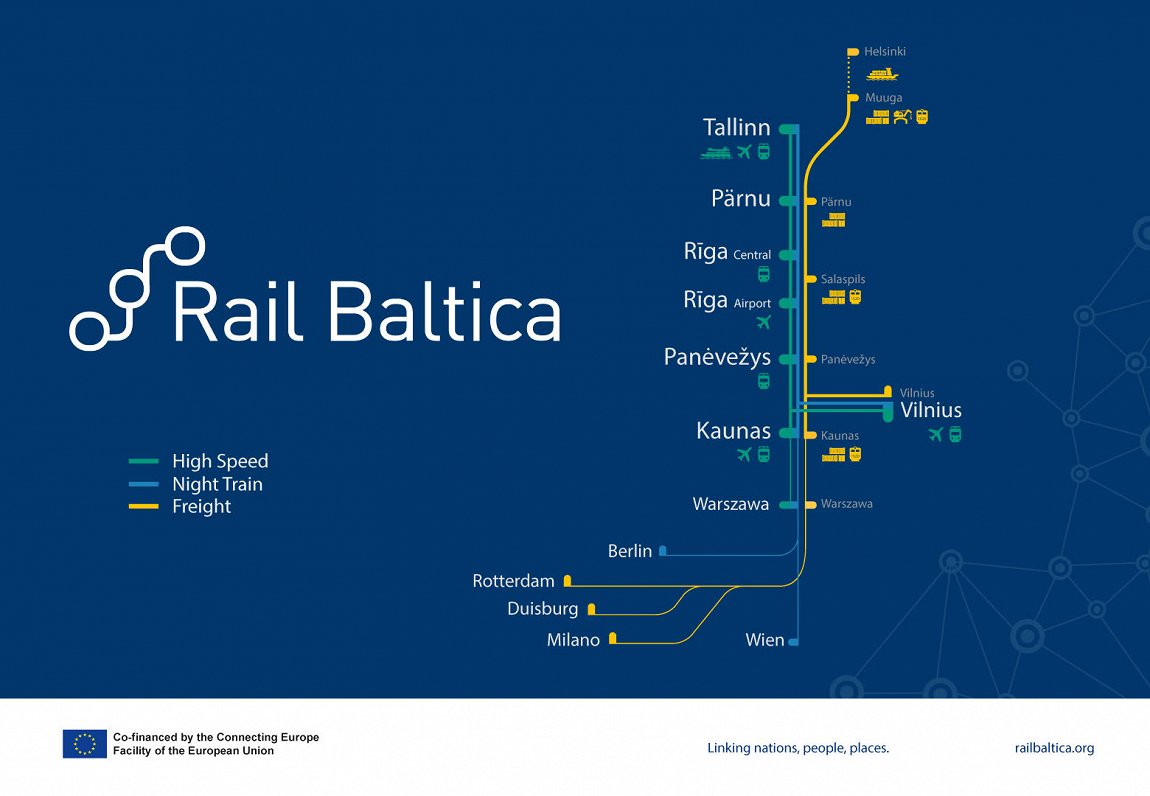Information about future timetables was released by the RB Rail consortium which has the task of overseeing the 6-billion-euro project.
Up to ten trains per day will run on Vilnius-Kaunas-Warsaw route.
"Rail Baltica will provide a fast rail connection between the Baltic capitals every two hours," the company said.
In addition, the plan includes two night-trains on the route Tallinn-Rīga-Kaunas-Warsaw-Berlin and Vilnius-Kaunas-Warsaw-Berlin, enabling passengers to travel further to other destinations in Europe.
In Rīga, travelers will be able to reach Riga International Airport from the Riga Central Station in around 10 minutes, with a minimum frequency of one train every 30 minutes.
The frequency of the high-speed trains is based on the anticipated passenger demand, which was assessed in the Rail Baltica Operational Plan for 2026 – 2056. Developed by the German company ETC Gauff Mobility GmbH, in consortium with COWI A/S (Denmark) and Institut für Bahntechnik GmbH (Germany), the plan reflects a modern, integrated approach, where market demand and development is set as the main criteria after which the timetable is defined.
New insights on #RailBaltica international, regional and cargo train movement and preliminary schedule for 2026-2056 are revealed in the Operational plan of the railway line. https://t.co/iksxGhbfmA pic.twitter.com/6auxqEsLf6
— RailBalticaOfficial (@RailBaltica) March 12, 2019
There is the small matter of actually constructing the lines and buying the necessary rolling stock before this provisional timetable can become a reality, but it will not be the first time the Baltic states will be connected via rail to Western Europe. In the 1930s the famous "Nord Express" made it possible for travelers to buy tickets from the Baltic capitals to Berlin, Paris and even London.
According to the plan, 2-3 cargo trains per hour with a maximum speed up to 120 km/h will run on the Rail Baltica line. The estimated axle load of trains is 25 tons and length of trains – 1050m. To facilitate freight movement on the line, three large-scale multimodal terminals are being developed – in Muuga (Estonia), Salaspils (Latvia) and Palemonas (Lithuania).
It is expected that 80% of freight trains on Rail Baltica will be intermodal trains, allowing logistic operators to move the freight from road to rail by putting containers and trucks on wagons. Reduction of air pollution and road traffic congestion are expected, as well as improvement of the overall road traffic safety.
The tracks will also be available for use by slower regional trains as well as expresses with a maximum speed of up to 200 km/h.
The plan suggests a sufficient passenger demand to run regional train services from Bauska to Rīga, from Salacgrīva to Rīga (Latvia), from Pärnu to Tallinn (Estonia), and from Marijampole through Kaunas to Vilnius (Lithuania). Furthermore, the plan indicates a feasible demand for regional cross-border traffic, such as from Marijampole to Rīga (Lithuania-Latvia), or from Tallinn to Riga airport (Estonia-Latvia).
"It should be noted however, that the future of the regional traffic development on Rail Baltica will require additional studies and governmental decisions," RB Rail said.





























